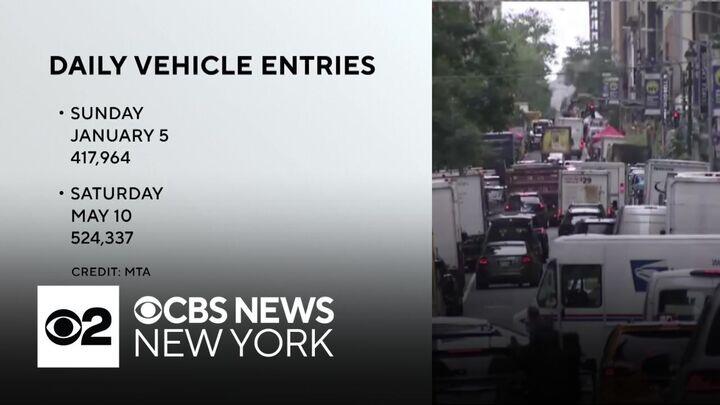Upcoming Deadline for NYC Congestion Pricing
A critical deadline is approaching as the Trump administration demands New York Governor Kathy Hochul to halt the city’s congestion pricing initiative by Wednesday. Failure to comply may jeopardize essential federal funding for various infrastructure projects in the Manhattan area, framing a tense backdrop as the issue unfolds.
Rising Traffic Amid Congestion Pricing
Recent statistics from the Metropolitan Transportation Authority (MTA) indicate a surge in the number of vehicles entering the congestion zone. The program, which initially reported around 410,000 vehicles on its launch day, saw that number leap to over 524,000 by May 10th. This increase has not gone unnoticed by those navigating the area’s roads.
Uber driver Victor Pinales, caught in the thick of the congestion, expressed his frustrations: “You pay a lot of money for congestion fees, and the traffic hasn’t changed. It’s a mess.” However, MTA data suggests that average vehicle entries in April were still 12% lower than prior to the implementation of the pricing model.
Federal Pressure and Infrastructure Projects
U.S. Transportation Secretary Sean Duffy has been vocal about his stance, labeling the $9 toll as a betrayal of American taxpayers who contribute through gas taxes towards the federal-aid highway system. In a letter to Hochul, he warned that non-compliance could lead to halted approvals for crucial projects like the Second Avenue Subway and the Hudson Tunnel Gateway, potentially impacting safety-related interstate fund allocations.
In a recent congressional hearing, Senator Kirsten Gillibrand questioned Duffy on his commitment to moving forward with significant transit projects. Duffy assured that he does not plan to cancel the associated grant agreements, signaling a complex interplay of local governance and federal oversight in New York City.
Responses from Local Business Owners
The impact of congestion pricing on businesses varies significantly across the city. For instance, Stathis Antonakopoulos, owner of Carnegie Diner and Café near 50th Street, noted an 11% decline in customers since the program’s inception. “We work with fewer people, and we’re losing a little bit of labor hours and labor force,” he commented.
“Usually after Easter holidays, we should see an uptick, but that hasn’t happened.” – Stathis Antonakopoulos
Conversely, Barrett Gross, CEO of Zafferano America, located near the Lincoln Tunnel, has observed positive trends. “There’s been a reduction in days of intense congestion, making it easier to travel around the city,” he stated. Meanwhile, pedestrian foot traffic in the area has reportedly increased by 11%, and subway ridership has risen by 17% on average weekdays.
Table: Traffic and Business Impact Statistics
| Metric | Before Congestion Pricing | After Congestion Pricing |
|---|---|---|
| Average Daily Vehicle Entries | ~ 466,000 | ~ 410,000 |
| Recent Vehicle Entries | N/A | ~ 524,000 |
| Customer Drop-off (Carnegie Diner) | N/A | 11% drop |
| Increased Pedestrian Traffic (Hudson Square) | N/A | 11% increase |
As the Wednesday deadline approaches, the outcome of this federal demand remains uncertain. However, experts assert that congestion pricing is likely to continue shaping New York City’s traffic landscape.




